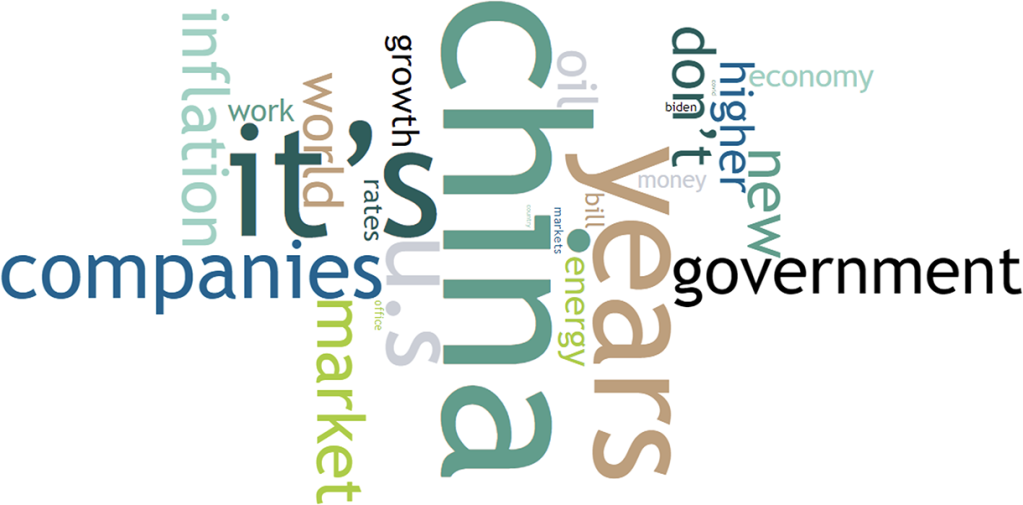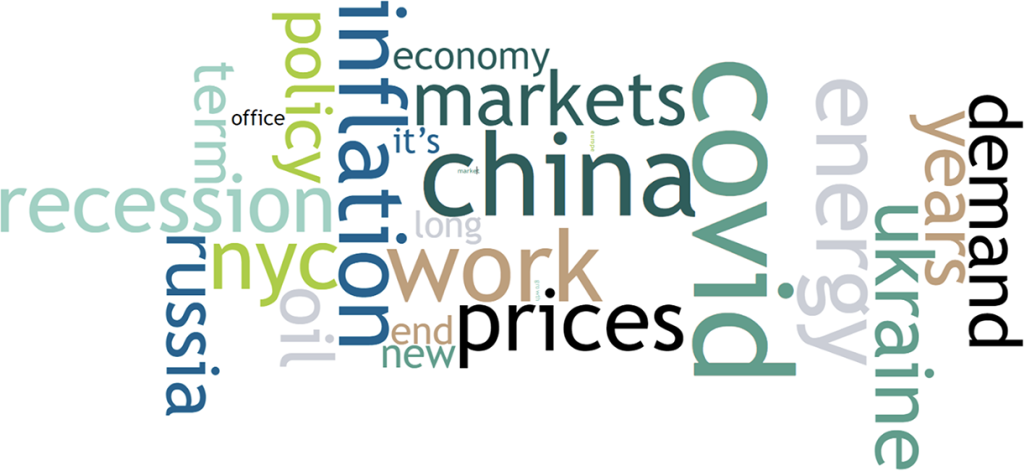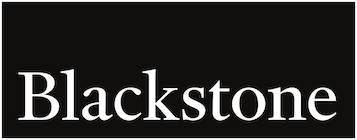Byron Wien: Complacency Gives Way to Uncertainty
Investors everywhere are puzzled by the recent market rally. While nobody likes to see stocks go down week after week, there was a strong feeling at this year’s Benchmark Lunches that there might be further downside ahead. Recent economic data—from GDP to inflation—continue to signal trouble, and geopolitical turmoil, from Ukraine to Taiwan, was top of mind for all of the attendees. Some felt inflation had peaked and that was the reason for the rally.
At the Google conference call with investors on July 26, the word “uncertainty” came up thirteen times, and that seems to sum up the investment mood that prevailed at the Benchmark Lunches. This is a series of four Friday lunches I organize every summer in eastern Long Island for serious investors to discuss the major issues facing the financial markets. About one hundred people attend in all, in groups of 25–30. They include real estate titans, hedge fund managers, former government officials, academics, private equity leaders and high-tech venture capitalists. I moderate a discussion for the better part of two hours.
If we could identify the concept that would set the tone for the coming year, that would be great. But as I look back on the recent past, we have been unable to do that. In 2019, we did not see COVID coming; in 2020, we were nervous and did not anticipate the strong market rally of 2021; last year, we were unaware that Russia would be at war with Ukraine. We try our best, but nobody can predict the future.
We used text analysis software to compare our notes from last year’s lunches to this one’s. A lot of the big issues were the same: China, COVID, inflation. Not surprisingly, inflation and energy were discussed more this year. Russia and Ukraine, of course, were new to the scene and featured prominently in the discussions. Perhaps a bit counterintuitively, COVID became a bigger topic of conversation this year.
Word Cloud: 2021 Benchmark Lunch Series Notes

Word Cloud: 2022 Benchmark Lunch Series Notes

We started each discussion talking about COVID and its impacts on society and our major cities. Unlike in prior years, when people held hope that vaccines and herd immunity could cause the virus to drastically diminish as a problem, most agreed that the virus is here to stay. The fact that COVID featured more heavily in this year’s conversations seems to reflect this dynamic. Fortunately, Omicron BA.5 and other variants have had less serious effects than prior strains. But who knows what is ahead as COVID-19 continues to mutate? If we have learned anything over the past two and a half years, it should be the importance of humility when trying to predict the course of this wily virus. As one participant noted, however, it is the way of pandemics to eventually dissipate in significance over time, as was the case with the Spanish flu.
Even so, the impacts of the ongoing pandemic continued to be felt, most acutely in dense urban areas. New York City office buildings had reached around 50% occupancy in any given week, but the real estate experts at the lunches noted that in-office attendance on a typical day remained lower. CEOs of major companies hoped that office occupancy would reach 70% after Labor Day. We heard that last year, however, so maybe we should view that with a dose of skepticism. Some smaller companies have instated a “work from home” model, but the big companies ask employees to be in the office at least three or four days a week and are keeping their large spaces. Some participants thought we had been trending toward four-day work weeks before COVID. In the 1930s and 1940s, a six-day or five-and-a-half day work week was common, but after World War II, five days became the norm. Even back in 2019, seeing empty offices on a summer Friday was not uncommon. Perhaps Thursday is the new Friday.
Many thought that remote work and virtual meetings were largely effective, but not a complete substitute for in-person interaction. That opinion had been expressed last year, but has since taken hold as the consensus view among business operators. Real relationships are built through face-to-face interactions. A company’s culture is critical to its success, and culture is taught and perpetuated as junior employees interact on a daily basis with a firm’s leaders. Younger people make friends and sometimes find their mates at work. There are plenty of people who like going to the office. There will no doubt be more flexibility in the future, but the benefits of being together, for both the employee personally and for her company as a whole, clearly outweigh the inconveniences. The pendulum has possibly swung as far as it will in the direction of remote work, and we may see a swing back towards an expectation of being physically present in the workplace. Some participants noted that tight labor markets incentivized employers to make concessions as they tried to attract and retain talent. With labor markets beginning to cool off, workers may have a bit less bargaining power.
One recurring theme across the lunches was that New York City remains attractive to young people. For recent graduates, the city retains its appeal as a cultural center, where the best and brightest want to live, work and play. That’s evident enough as Manhattan rents have soared to new records. The city faces critical challenges, though, that it must address to maintain its cultural preeminence. Crime was one of the overarching concerns that the Benchmark participants cited. The NYC police force has shrunk since 2020, while crime rates are up. Of course, it’s an issue that many cities face.
There was not much optimism about Russia’s war of aggression in Ukraine. Many thought that a ceasefire was unlikely before year-end. Mounting casualties on both sides are one reason to think a ceasefire is possible, particularly given that there is an overall sense that things cannot continue on this way. Both countries are running low on weapons, ammunition, food and medical supplies. Many felt that ongoing Western support for Ukraine is critical in what increasingly seems to be a war of attrition. And while many noted the moral importance of the West’s support for Ukraine, the costs can’t be ignored. The war has already cost the US more than $36 billion and Europe around $12 billion. Ongoing uncertainty around the supply of natural gas to Europe will only increase as the weather becomes colder. Certain countries, such as France and Germany, are particularly vulnerable to being cut off from Russia’s natural gas. On the optimistic side, some felt that Americans tend to underestimate the resolve of Europe when it faces difficult challenges. The war has only served to re-energize institutions like NATO and to unify the EU. Others noted that important lessons learned from this crisis are likely to result in increased investment in energy supply and defense spending. We all hope for a quick resolution to the war soon. After that, the big question is, where will the money needed to rebuild Ukraine come from?
While there was general agreement that the Democrats were likely to lose the House of Representatives, there was less certainty about the Senate. The January 6th hearings made some revise their opinions. President Biden’s low approval rating and his age made many think he would not run for reelection. While the Republicans in attendance expect that Donald Trump will enter the race, few felt confident that the party would nominate him. There was some enthusiasm for potential candidates on the Republican side, including Ron DeSantis, but no high-profile Democrats currently active in politics stood above the rest as a possible candidate.
There was great concern about the direction of the relationship between the US and China. This was also the case in past years, but the urgency of the issue felt a little greater given Nancy Pelosi’s trip to Taiwan, which ended up taking place midway through the lunch series. People generally felt that this was not a productive visit. Those in attendance at the lunch held the week before her trip were nearly unanimous that she should cancel it. That may be because they were largely people who are accustomed to assessing risk, and the risk/reward in this instance did not appear favorable. As we know now, she did not cancel it, and it remains too early to know the long-term implications of the visit. In any event, she did demonstrate a resolve that the United States was not willing to let China determine where American officials could travel. Looking ahead, there was no real optimism at any of the lunches on the prospects of US–China relations improving over the next year. The group generally thought that things are trending in the wrong direction, but no one sensed any immediate lurches in policy in one direction or another. Everyone thought the US and China finding ways to improve trade and diplomatic relations would be productive, as well as being better for the two economies to cooperate, despite their disagreements. Everyone expected President Xi Jinping to secure an unprecedented third term. In terms of China’s economy, the attendees widely believed that economic growth would come in significantly below the government’s target this year, with real GDP growth coming in as low as 2.5% for the year. Some thought that the onerous zero-COVID policies, which have been detrimental to the country’s economy, might be eased. China was likely to employ both fiscal and monetary tools to get growth back on track.
There was considerable debate about whether the US were in a recession or not. Sentiment was fairly evenly split across the lunches between “definitely yes” and “perhaps not,” but skewed to the former. The blowout July jobs report came out midway through the lunch series and may have changed some minds. While everyone acknowledged the cost-of-living crisis being spurred by inflation, employment remains strong, corporate profits growth remains positive, and consumption continues apace. The data otherwise felt simply mixed; every “pro” had its “con.” The labor market remains historically strong, but unemployment is more of a lagging indicator (one participant thought it would be the result of, not the cause of, a recession). While top-line revenue growth for many companies continues to rise, margins are being pressured by surging costs. One attendee offered the insight that we should have less conviction than usual, because so many conditions have diverged so significantly from their historical trends.
On inflation, the sense was that while it might soon peak in terms of its year-over-year increases, it was still a problem, and there were plenty of reasons to think it might remain so over the medium term. There are some positive signs for inflation moderating from current levels, including falling prices in many key commodities and supply-chain affected goods. In addition, comparisons will be easier in the fall, contributing to lower year-over-year increases. Despite these encouraging trends, growth in wages and shelter prices have remained strong, and that has a more medium-term implication for inflation. Others mentioned that secular underinvestment in energy supply and capacity, compounded by regulatory restrictions and geopolitical uncertainty, are an argument for inflation to be stickier in the years to come. That is true not just for traditional hydrocarbons, but also for the key commodities needed to produce the technologies to transition to renewable energy sources. Finally, at least a few thought that rising shelter prices, which account for about a third of the Consumer Price Index calculation, are likely to keep inflation higher for longer. While growth in shelter prices has started to moderate, there is a secular under-supply of new homes, which supports inflationary pressures over the long term.
All of this has important implications for Federal Reserve policy. A few long-time observers of Fed policy think that Jay Powell is serious about returning inflation to the 2% target. The problem is that a higher Federal funds rate and the reduction of its balance sheet takes a long time to work into the real economy. Many attendees perceived that the big risk is that the Fed will be too aggressive in its attempt to reduce inflation. It waited too long to start, and now it may try to do too much, too fast. There were very few people who felt that the Fed could start easing soon, despite markets pricing that in. With another 50- or 75-basis-point Fed hike in September, and the potential for additional 25-basis-point increases following that, the Fed funds to 10-year Treasury yield spread would invert. Couple that with the negative sentiment readings for the general public, as well as investors, and the economy could be driven into a recession, despite positive underlying fundamentals.
And that brings us, finally, to the markets. This may have been the category which most betrayed the uncertainty of the group. Of those who shared an opinion, perhaps half thought that the next significant move in the market would be down. But it was emblematic of the mood in our current environment that most people seemed unwilling to speak up one way or the other. We are exiting a decade of accommodative monetary and fiscal policy which provided generous returns for equity investors. We are now entering a period of restrictive monetary policy, with higher interest rates and margins that are challenged by the inflationary pressures discussed previously. These circumstances present headwinds for price-to-earnings ratios. Someone aptly described our strange environment as being one of “high nominal” but “low multiple” growth. The overall outlook was that we should expect more muted returns than in the last cycle. That means mid- to high-single-digit returns for equities, rather than the 10%+ returns many have grown accustomed to, and something lower than that for high-quality bonds. I had the feeling that most of the lunch attendees were relatively inactive in their portfolios right now.
One of the questions I ask every year is what investment opportunities people are excited about, and whether people think innovations over the next 30 years will be more impactful than the innovation of the last 30. I always start out with the (highly unpopular) opinion that we are not going to see more significant innovations than we’ve had. I’ve always been ripped to shreds for that one, and once again, I was. While some thought that Bitcoin and other cryptocurrencies had been irreparably damaged by the recent collapse in crypto markets, more people believed in the durability of digital currencies. These people felt that the demand for them in the long term far outweighs the recent losses. One example of the demand relates to the value of cross-border financial transactions—in the trillions of dollars— which alone would be enough of a thesis for continued cryptocurrency demand. Some of the innovations and disruptions that were mentioned included significant changes in the way that people travel (including to and through space); alternative and virtual realities; technology applications for “real world” issues, such as addressing water shortages through efficient water desalination and transportation; acceleration in computing, with massive increases in the number of devices in the world and the number of hours spent on them. Others mentioned the boundless opportunities in the healthcare and biotechnology fields—many expected major scientific breakthroughs in the coming years, such as advances in neuroscience or discovery of cures for common diseases. There was also some hope that there would be a technological innovation in the near future that would help to reduce emissions from this point forward and allow us to hit carbon-reduction targets.
More than in previous years, I felt there would be something happening over the course of the next year that we didn’t anticipate. Like most in the group, I thought that remaining somewhat defensive in spite of the rally over the past month was a good strategy. In last year’s essay, the consensus was one of complacency. This year, it’s hard to say that there’s a consensus on much of anything at all. As complacency has given way to doubt, let’s hope the next stage is some clarity. That’s what our team’s work aims to bring, in our small way, and we look forward to keeping you apprised of our outlook as we enter the last quarter of this year and begin to work on the 38th edition of the Ten Surprises.
Taylor Becker attends all of the Benchmark Lunches and provided editorial assistance in the writing of this essay.
The views expressed in this commentary are the personal views of Byron Wien and Taylor Becker and do not necessarily reflect the views of Blackstone Inc. (together with its affiliates, “Blackstone”). The views expressed reflect the current views of Byron Wien and Taylor Becker as of the date hereof, and neither Byron Wien, Taylor Becker, or Blackstone undertake any responsibility to advise you of any changes in the views expressed herein.
Blackstone and others associated with it may have positions in and effect transactions in securities of companies mentioned or indirectly referenced in this commentary and may also perform or seek to perform services for those companies. Blackstone and others associated with it may also offer strategies to third parties for compensation within those asset classes mentioned or described in this commentary. Investment concepts mentioned in this commentary may be unsuitable for investors depending on their specific investment objectives and financial position.
Tax considerations, margin requirements, commissions and other transaction costs may significantly affect the economic consequences of any transaction concepts referenced in this commentary and should be reviewed carefully with one’s investment and tax advisors. All information in this commentary is believed to be reliable as of the date on which this commentary was issued, and has been obtained from public sources believed to be reliable. No representation or warranty, either express or implied, is provided in relation to the accuracy or completeness of the information contained herein.
This commentary does not constitute an offer to sell any securities or the solicitation of an offer to purchase any securities. This commentary discusses broad market, industry or sector trends, or other general economic, market or political conditions and has not been provided in a fiduciary capacity under ERISA and should not be construed as research, investment advice, or any investment recommendation. Past performance is not necessarily indicative of future performance.
For more information about how Blackstone collects, uses, stores and processes your personal information, please see our Privacy Policy here: www.blackstone.com/privacy.



